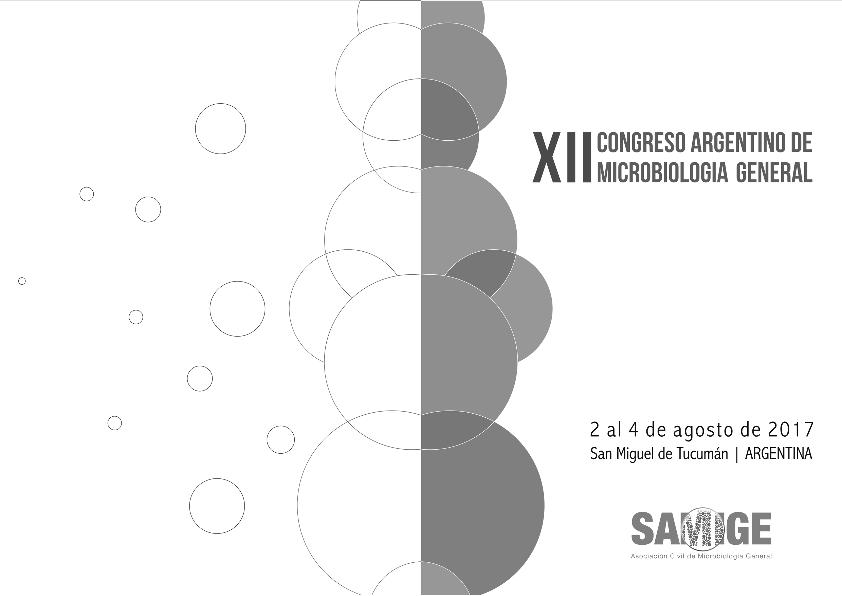Evento
Metagenomic applied to microbial diversity study in a zone affected by an acid mine drainage: relation between physicochemical parameters and taxonomic groups
Tipo del evento:
Congreso
Nombre del evento:
XII Congreso Argentino de Microbiología General
Fecha del evento:
02/08/2017
Institución Organizadora:
Asociación Argentina de Microbiología;
Título del Libro:
XII Congreso Argentino de Micorbiología General
Editorial:
Asociación Argentina de Microbiología
Idioma:
Inglés
Clasificación temática:
Resumen
The most documented pollution associatedwith abandoned mining areas is the acidic water produced by the oxidation ofsulfides ores exposed to surface. This acidic water is known as Acid MineDrainage (AMD) and enhances the mobility of heavy metals from soil andsediments, what poses a threat to the environment. Likewise, AMD affectedenvironments are low-complexity natural systems regarding to biodiversity. InSan Luis-Argentina, the drainage that originates in a gold mine abandoned since1894 is released to La Carolina stream and possesses AMD characteristics. Inprevious works, we reported the influence of the mine drainage onphysicochemical parameters of La Carolina stream sediments. The aim of thisstudy is to determinate the influence of these mine drainage on microbialdiversity and to stablish specific relations between microbial taxonomic groupsand physicochemical parameters of the affected zone.Twelve sediment samples from insidethe mine (7) and from La Carolina stream (5), before and after receiving themine drainage, were selected to total DNA isolation, which was performed using DNAsoil kit, MOBIO. Metagenomic sequencing of PCR amplified products of 16S rRNAand 18S rRNA genes was carried out by MR DNA (www.mrdnalab.com, TX, USA) on MiSeq (Illumina) platform. Microbialdiversity results were analyzed trough Metagenomics-RASTserver (MG-RAST; http://metagenomics.anl.gov). In order to stablish specific relation betweenmicrobial taxonomic groups and physicochemical parameters of the zone, a CanonicalCorrespondence Analysis (CCA) was performed.CCA showed that prokaryoticdiversity is affected majorly by pH values, favoring the presence of phyla Actinobacteria and Gamma-proteobacteria in samples characterized by low pH values(inside the mine). Phyla Nitrospirae,Chloroflexi, Delta-proteobacteria, Thaumarchaeota and Euryarchaeota are majorly abundant in samples that presented highconcentrations of heavy metals. Likewise, Alpha-proteobacteriais abundant in samples that were taken in presence of sunlight (streamsamples). Regarding to eukaryotic diversity, the greatest incidence is given bythe sunlight presence. All samples taken inside the mine, in the absence oflight, showed to fungi and protists members as the most abundantmicroorganisms. Those samples taken in the presence of light, presented toalgae (green algae and diatoms) as the most abundant microorganisms. Afterreceiving the AMD, the stream presents a decrease in diatoms abundance andgreen algae predominate, probably due to the acidification of the watercoursebecause of the incidence of the AMD in down-stream samples.It can be clearly observed thatthe AMD released to La Carolina stream influences on eukaryotic and prokaryoticdiversity, favoring the presence of some microorganisms over others, dependingof the physicochemical characteristics of the zone. This study shows theincidence of mining activities on natural sources, even long time after theirclosure.
Palabras clave:
METAGENOMICS
,
MICROBIAL DIVERSITY
,
HEAVY METAL POLLUTION
,
ACID MINE DRAINAGE
Archivos asociados
Licencia
Identificadores
Colecciones
Eventos(INQUISAL)
Eventos de INST. DE QUIMICA DE SAN LUIS
Eventos de INST. DE QUIMICA DE SAN LUIS
Eventos(PROIMI)
Eventos de PLANTA PILOTO DE PROC.IND.MICROBIOLOGICOS (I)
Eventos de PLANTA PILOTO DE PROC.IND.MICROBIOLOGICOS (I)
Citación
Metagenomic applied to microbial diversity study in a zone affected by an acid mine drainage: relation between physicochemical parameters and taxonomic groups; XII Congreso Argentino de Microbiología General; San Miguel de Tucumán; Argentina; 2017; 1-2
Compartir




